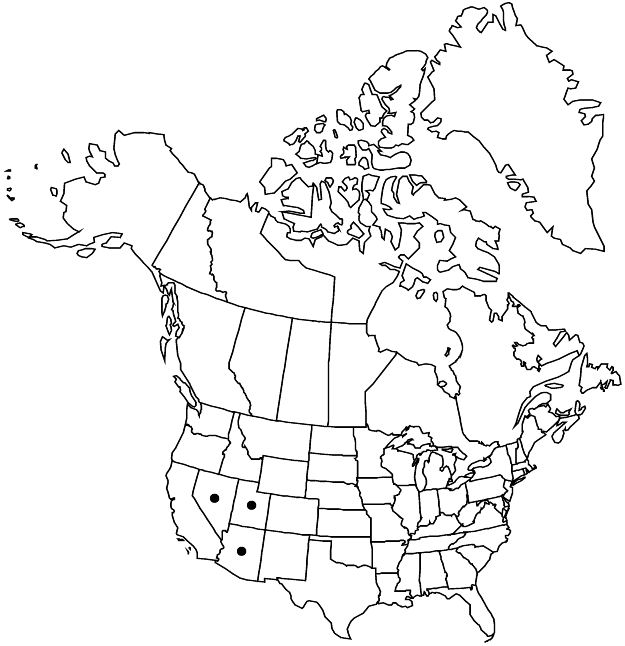Petalonyx parryi
Proc. Amer. Acad. Arts 10: 72. 1874.
Common names: Parry’s sandpaper plant
EndemicConservation concern
Treatment appears in FNA Volume 12. Treatment on page 544.
Revision as of 17:17, 29 July 2020 by imported>Volume Importer
Shrubs, bushy to moundlike, to 15 dm; branches of current season to 13 cm. Leaves: petiole 0.5–3.5 mm; blade ovate to elliptic, without marked size dimorphism, to 40 × 30 mm, base acute to rounded, margins usually crenate to serrate, sometimes small leaves entire, apex acute. Inflorescences 35–65-flowered. Flowers strongly bilaterally symmetric; petals spatulate, 10–15 mm, claws postgenitally distally coherent, forming slitted corolla-tube; stamens exserted laterally through slits between petal claws. 2n = 46.
Phenology: Flowering Apr–Jul.
Habitat: Wash bottoms, desert plains, usually white to gray, clayey soils.
Elevation: 400–1300 m.
Distribution

Ariz., Nev., Utah.
Discussion
Selected References
None.
Lower Taxa
None.
"not elongating" is not a number.
... more about "Petalonyx parryi"
monomorphic +
longer +
epigynous +
dehiscing +
acute +
exserted +
ovate;elliptic +
coherent +
Parry’s sandpaper plant +
symmetric +
bisexual +
straight +
clavate +
35-65-flowered +
simple +
entire +
alternate +
cauline +
dentate +
distal +
absent +
parietal +
anatropous +
1;60 +
inconspicuous +
epigynous +
differentiated +
symmetric +
divaricate +
white +
persisting +
spatulate +
absent +
pseudomonomerous +
subapical +
Proc. Amer. Acad. Arts +
1874 +
ovoid +
symmetric +
green +
persisting +
persistent +
connate +
shorter +
lanceolate +
longitudinal +
symmetric +
exserted +
petaloid +
absent +
papillate +
absent +
Petalonyx parryi +
Petalonyx +
species +
stinging +
moundlike +